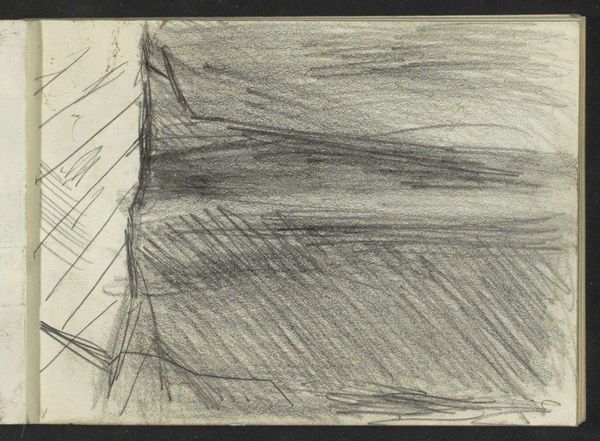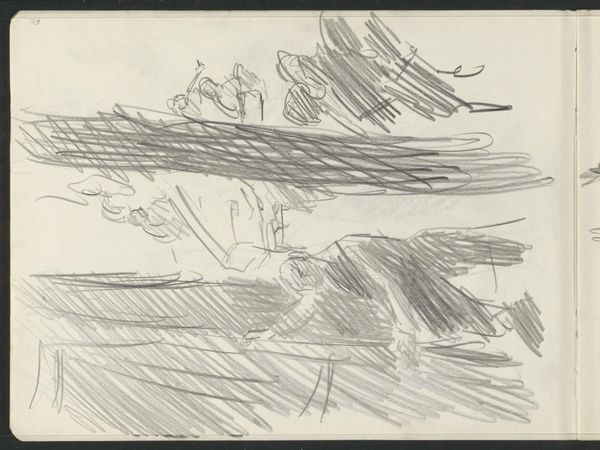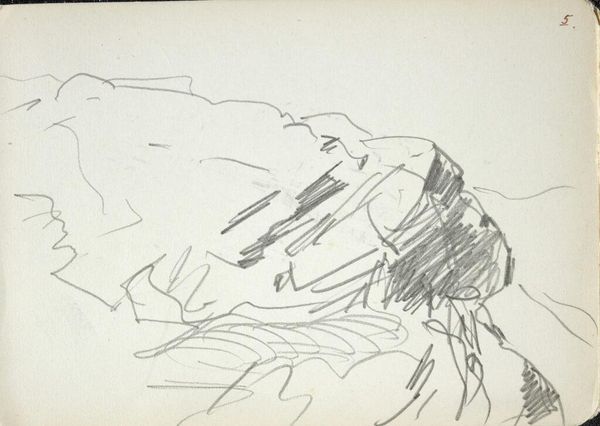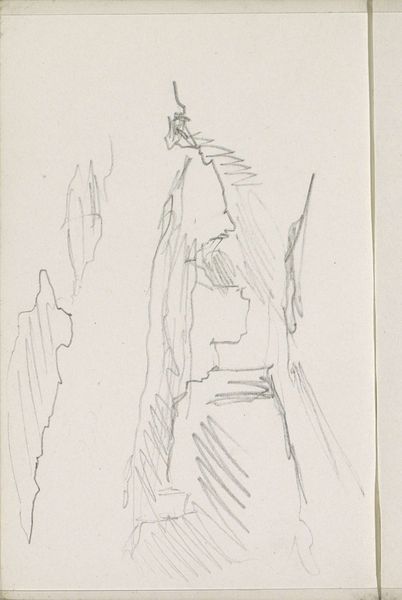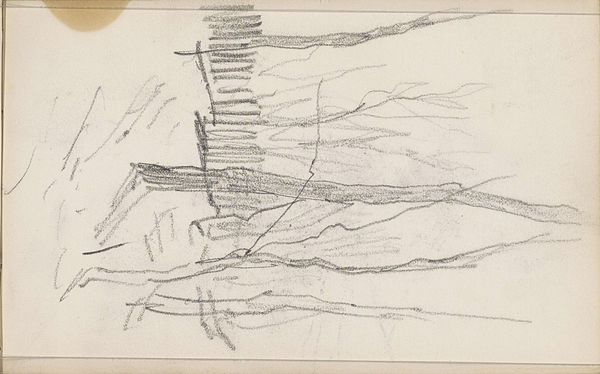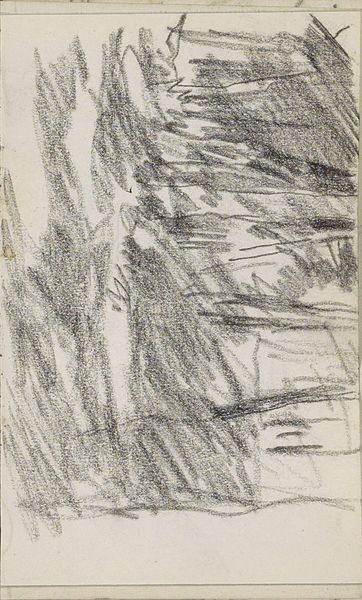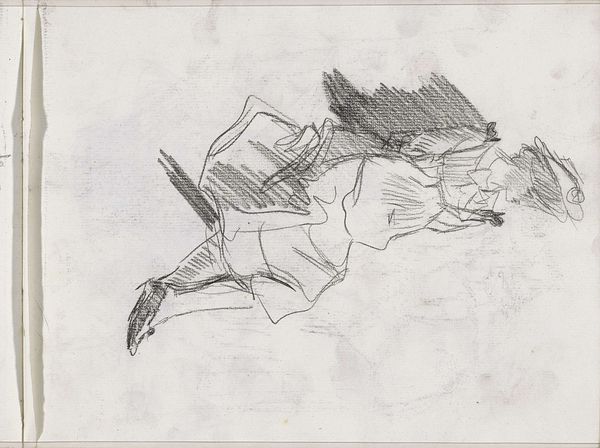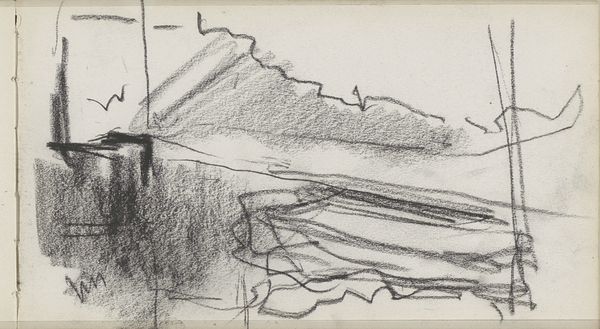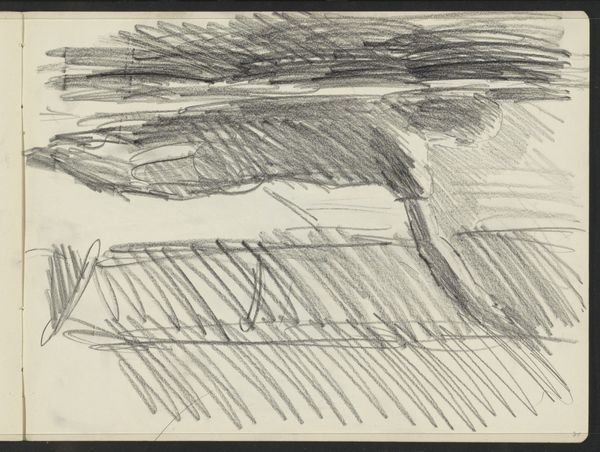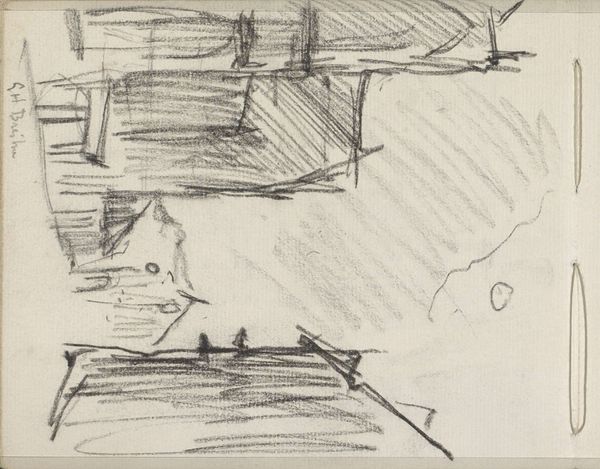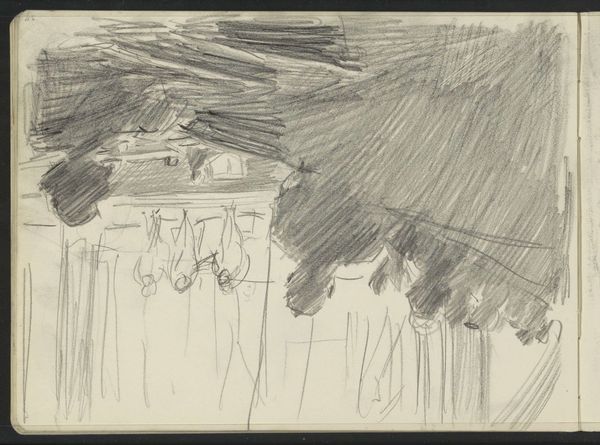
Copyright: Rijks Museum: Open Domain
Curator: This drawing, done with pencil, is titled "Studie, mogelijk van een theatergordijn en een stellage," which translates to "Study, possibly of a theater curtain and scaffolding" by Isaac Israels, and it's part of the Rijksmuseum collection, created sometime between 1875 and 1934. Editor: My immediate response is the contrast. A dark mass looming above more defined, angular shapes. It feels incomplete, or rather, a fragment of something larger. Curator: That sense of incompleteness echoes the drawing’s status as a study, doesn't it? Note how Israels, though associated with Impressionism, offers something bordering on abstraction here. Editor: Abstraction emerges so beautifully when process is evident. The hasty strokes, the layering of graphite, reveal the artist grappling with form, light, space...almost performing labor. Curator: Yes, and what's fascinating is the potential subject matter: a theatre curtain and scaffolding. These themselves are liminal objects, temporary structures used to create illusion, or rather, artifice. What feelings do you think they elicit from us as signs? Editor: Interesting connection to artifice. The curtain as artifice, concealing, revealing...It implies performance, perhaps spectacle. The scaffolding on the other hand signifies something provisional and functional. It is humble and exposes construction as labor. Their pairing, staged this way, exposes some tension... Curator: Exactly! Israels presents us not with a polished performance, but with the behind-the-scenes mechanics. There's a vulnerability in that rawness. He gives the suggestion that he also finds the tension of making and production, but rather he embraces this stage in the artwork. Editor: Thinking about it more, perhaps that tension points toward broader societal shifts. Industrialization and the changing role of art. Scaffolding always implied physical labour that in an industrialized world is easily covered over... Curator: And that is very different from the "glamour" presented in the theater, a place of class performance...It exposes our contemporary sense-making. It feels especially timely now as labor issues, class issues become more visible within society. Editor: Precisely! It's easy to see a direct, unromantic engagement with labour here, something usually rendered invisible. And of course all that only gets captured through such material handling of pencil. It invites me to re-evaluate so many stage and glamour discourses within culture at large... Curator: It certainly makes us reflect, as well, about all the unseen effort behind the things we consume or the stages that appear seamless to us on surface. Thank you for the insight. Editor: And thank you, I will not see a theatre piece in the same way.
Comments
No comments
Be the first to comment and join the conversation on the ultimate creative platform.
